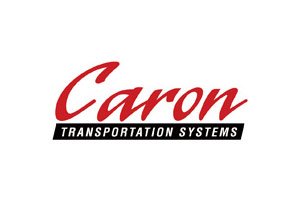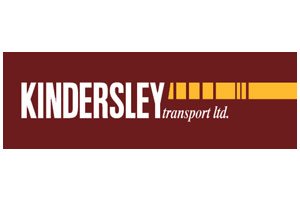Key Takeaways
-
Preventative maintenance and regular inspections are key. This not only saves money but keeps the drivers safe from common truck breakdowns such as engine issues, brake failures, and tire problems. Being proactive helps avoid more expensive repairs and keeps drivers and other travelers safe.
-
Learn to identify warning signs such as strange sounds, dashboard warning lights, or fluid on the ground while driving. Taking care of them ahead of time will prevent unexpected breakdowns and help your truck run at full capacity.
-
If you find yourself facing a truck roadside breakdown, your top concern should be safety. Move over to a safe location, turn on your flashers, and stay calm while you evaluate your options. Providing clear documentation of the issue will allow your technicians to more quickly diagnose and resolve the problem.
-
Make use of emergency tools and equipment, such as a spare tire or portable jump starter, for on-the-road maintenance and repairs. Make sure these supplies are available and functioning whenever needed.
-
With mobile emergency roadside repair services, you’ll have quick and convenient solutions for emergencies, reducing your vehicles’ downtime and saving you from costly tows. Fifth, seek experienced technicians and reliable service providers.
-
Create and stick to a regular maintenance schedule to avoid roadside repairs in the future. Tend to small problems quickly and have emergency gear on hand so you’re ready when the unexpected occurs.
For the safety of everyone on the road, truck roadside repair allows commercial vehicles to return to the road quickly and safely following unexpected breakdowns. These mobile units often perform tire changes, battery replacements, fuel delivery, and minor mechanical repairs right at the breakdown site.
Conveniently designed, their timesaving benefits allow for less need on towing, which is highly important with time-sensitive deliveries. These mobile repair units come stocked with the tools and parts needed to address most issues right then and there.
This mobile approach reduces downtime and ensures logistics operations continue humming along. Roadside repair services offer immediate, convenient solutions to keep truck drivers and fleet operators on the move.
They are one of the first responders taking care of emergencies such as engine failure or blowout tires.
Understanding Truck Breakdowns
Unfortunately, truck breakdowns are simply an unavoidable reality of the transportation industry, particularly when your fleet is always on the go. Commercial trucks move almost 75% of all freight by weight. For them, reliability is not merely about sticking to schedules. It is fundamental to keeping operations safe and efficient.
By understanding what causes breakdowns to happen, we can nip these problems in the bud, ensuring that both your driver and your fleet remain productive.
Common Causes of Truck Breakdowns
Mechanical failures consistently rank near the top of breakdown cause list. Engine-related issues, especially for older diesel models, are frequent given their high usage and vulnerability to wear and tear. Brake issues are a double whammy.
Brake issues are not only very dangerous, contributing to accidents, but they negatively impact fleet performance. Tire blowouts, usually from lack of inflation or excessive wear, are probably the number one problem drivers encounter.
Electrical system breakdowns, including wiring issues or battery malfunctions, can lead to sudden and severe delays. Ignoring or skimping on regular preventative maintenance only compounds these issues, leading to expensive repairs that could have been prevented.
Importance of Regular Maintenance
Routine preventative maintenance is critical to avoiding these mechanical breakdowns. Scheduled maintenance prevents the likelihood of a breakdown by keeping trucks in good working order, identifying minor problems before they become major ones.
Fleets that implement this best practice experience a decrease in truck breakdowns, improved fuel efficiency, and reduced costs over time. Sticking to maintenance schedules extends vehicle lifespan, especially for trucks driving over 1,100 kilometers daily.
Signs of Potential Issues on the Road
-
Unusual noises or dashboard alerts
-
Fluid leaks under the vehicle
-
Uneven tire wear or poor handling
Steps to Handle a Truck Breakdown
Experiencing a truck breakdown can be stressful, but handling it methodically ensures safety and minimizes downtime. Having a protocol in place allows drivers to address the matter appropriately and safely, while ensuring their health comes first.
1. Stay Calm and Ensure Safety
Step one is always ensuring your personal safety. Get the truck to the safest location possible. Get to a safe place such as the road shoulder or an empty parking lot, staying far away from passing vehicles.
Turn on your hazard lights as soon as you can to alert other drivers. Setting up reflective triangles at 15m, 30m, and 45m behind the breakdown truck forms a safety triangle.
It’s important to stay calm so you can approach the situation with a clear mind and rationally determine the best option.
2. Assess the Situation and Diagnose
Look over your truck to identify any major problems such as a flat tire, smoke coming out of the hood, or other fluid leaks. Warning lights on the dashboard will give you hints to some issues like engine or brake failure.
If you can, make note of any strange noises or changes in performance leading up to the breakdown. A sudden loss of power can indicate issues with your fuel system.
Grinding sounds may suggest that something is going wrong with the truck’s transmission. Describing these symptoms will allow technicians to deliver quicker solutions.
3. Use Emergency Tools and Equipment
Every truck should have these basics in their toolkit, including a jack, lug wrench, flashlight and spare tire. A simple tool kit should be able to address the small fix-it jobs, like retightening a few connections or changing out a fuse.
Keep the first-aid kit where it can be reached quickly in an emergency, and check all equipment regularly to make sure it’s working.
4. Contact Professional Roadside Assistance
Call a trusted service provider, and give them specific information about where you are broken down and what the problem is. Mobile repair technicians are more likely to be able to address an issue on the spot, quickly resolving valuable downtime.
As an example, to get repair times under the half-hour mark, truckload carrier Werner Enterprises has made repair processes more efficient using telematics solutions such as I360.
Establishing these personal relationships with local tow companies and repair shops ensures you’ll get faster assistance.
5. Plan for Repairs or Towing
If repair isn’t feasible on-site, coordinate to have the truck towed to a preferred repair shop. Look for adjacent shops that are able to handle the known problem.
Understand the real possibility of significant delays and prepare with backup transportation or overnight arrangements to avoid major disruption to schedules.
Common Roadside Repairs and Services
Truck roadside repair services are focused on getting you back on the road quickly during an unexpected breakdown to avoid costly downtime. These services solve a wide range of roadside issues. From pothole patching to emergency hail repair, they deliver fast fixes and services that help your ride go further and faster.
From tire issues to air brake malfunctions, 24/7 heavy-duty roadside assistance protects workers and keeps businesses moving.
Tire Repair and Replacement Options
Tire problems rank as one of the top roadside repairs. These can be serious issues such as punctures, sidewall damage, uneven tread wear, or even complete blowouts. Evaluating the damage is the first order of business.
Most small nail punctures can be repaired in a matter of minutes. If you notice cords or cracks on your tire, it’s time to get it changed now. Know your tread depth. Measuring tread depth is critical to ensure you’re safe on the road.
If the depth gets under 1.5 mm, you need new tires. Some mobile repair services do carry a variety of tires, making on-the-spot replacements a possibility.
Fuel Delivery for Stranded Trucks
Running out of fuel could leave you stuck in inconvenient or rural locations. It can be dangerous, clogging fuel systems when allowed to run dry. Fuel delivery services specialize in reaching stranded trucks quickly, often within 45-60 minutes, delivering enough fuel to get you to the nearest station.
Having local providers’ contact information on hand means you’re never left out to dry.
Battery Jump-Start Assistance
A failing battery usually presents itself as slow engine cranks or dim cabin lighting. Follow the right tips for jump-starting your battery with cables for a safe jump-start.
Portable jump starters are a valuable addition to any truck’s emergency kit, offering a quick fix without needing external help.
Fixing Coolant and Fluid Leaks
Coolant and other fluid leaks can cause engines to overheat and subsequently burn out. Look for puddles or drips under the truck. Temporary sealing solutions can provide you with more time to reach a repair shop.
It’s necessary to get urgent care to avoid more costly repairs.
Air System Repairs for Brakes
Air brake systems are crucial for the safety of trucks. Problems such as pressure loss or hearing a leak need to be addressed right away.
When there’s a failure in the system, it can easily compromise their ability to stop, which is why roadside brake system repairs are a high-priority service.
Benefits of Emergency Mobile Repair Services
On-demand emergency mobile tractor-trailer repair services present an effective alternative for truck drivers and commercial fleet managers who encounter sudden vehicle malfunctions. These services actively take on the issues associated with traditional repair routes. Expert technicians and specialized equipment are delivered right outside your door. This strategy reduces downtime and gets trucks back on the road quickly.
Fast Response Times for Emergencies
Rapid response times are essential for severely limiting the impact on operations and services. Convenient and time-saving mobile repair services usually come to you in 45-60 minutes, so you can get your vehicle repaired quickly. For truck drivers, every minute matters—unnecessary delays can throw off drivers’ delivery schedules and overall operational efficiency.
Plus, most providers guarantee 24/7 roadside assistance, so you know they’re there for you in an emergency. Customer testimonials frequently reference how these services focus on both quickness and dependability, providing reassurance in a tense situation.
Skilled and Experienced Technicians
Mobile service technicians are specially trained to provide the most expertise and experience directly to the roadside. Our certified professionals are equipped to handle even the most complex diagnostics and repairs on the spot, delivering the same quality you’d expect in a traditional shop.
Teams like the world-class ones at Torque by Ryder are ready to tackle complex problems with urgency. Their plumbing expertise never fails to facilitate a perfect repair the first time, keeping the headache of repeat plumbing issues away and getting you back on track.
Wide Range of Repair Solutions
From basic home upgrades to complex emergency repairs, home improvement mobile services are ready to meet the moment. They provide an emergency single point of contact that simplifies the emergency response process and allows you to eliminate working with various service providers.
From engine diagnostics to brake replacement, these services cater to a range of truck needs, making them more convenient and efficient.
Access to Quality Parts On-Site
Mobile repair units come stocked with high-quality parts, including original equipment manufacturer (OEM) options when they’re available. Making sure quality parts are used ensures the safety and performance of the vehicle, and having them available on-site helps speed up the repair.
This preventive approach removes the wait time typical with outside procurement of parts, limiting downtime as much as possible.
How to Prevent Future Breakdowns
Preventing future truck breakdowns takes a proactive approach that starts with regular inspections, a strong maintenance plan, and being prepared. With these measures in place, drivers and fleet managers can prevent breakdowns, avoid unexpected expenses, and promote safer travel.
Conduct Regular Vehicle Inspections
Routine inspections are critical to preventing future breakdowns by catching issues before they become a serious threat. Making time for these inspections means you can identify problems, such as bald tires or low fluid levels, before they become more serious. Daily inspections of your tires can save you from a blowout.
When a blowout does happen, hope that tire companies know what they’re doing, according to Copot. By giving drivers the proper training, they can be equipped to do the basics, like check for busted brake lights or fluid leaks. A checklist prevents you from forgetting any key components.
Be sure to account for items such as the battery, which should be load tested every six months.
Follow a Scheduled Maintenance Plan
A regular maintenance schedule based on manufacturer recommendations and daily use goes a long way towards keeping trucks in top shape. Regular tasks, such as changing crankcase filters every three years or cleaning Diesel Particulate Filters (DPFs), help avoid costly repairs.
Documenting these activities in detail helps with monitoring vehicle performance and making proactive updates to plans when things change.
Address Minor Issues Early
By simply letting drivers report minor issues as soon as they notice them, we stop those minor inconveniences from turning into big breakdowns. For example, logging even small complaints such as a pulling to one side can help identify more serious mechanical problems.
By educating drivers on these practices, TNCs can further extend the vehicle’s lifespan, increasing reliability.
Keep Emergency Supplies Ready
Basic emergency gear – flares, first-aid kit, spare tools – are essentials that should be kept in your vehicle at all times. Keeping these supplies routinely stocked and available makes it easy to be prepared for the unexpected.
Be it a product failure or a roadside emergency. Apps such as TrukFix help make getting assistance easier, as Hilton noted.
Conclusion
Truck roadside repairs aren’t ideal and can throw a wrench in your schedule, but knowing exactly what to do keeps you one step ahead. With swift action, dependable roadside repair, and proper maintenance your truck is never out of commission. Mobile repair units help you save time and stress by bringing the qualified repair right to your side. Repairing or replacing tires, batteries, or other engine issues are all done on the spot.
Preventive care is another big piece. Avoiding truck repair breakdowns Simple habits such as regular inspection and servicing can minimize risks and ensure your truck’s performance tops.
Being ready really helps out on the highway. When getting truck roadside repair, look for those that focus heavily on getting you back on the road as fast as possible. At the end of the day, it’s about protecting your journey and getting your rig back on track.
Frequently Asked Questions
What are the most common reasons for truck breakdowns?
Typical causes are overheating engines, flats or blowouts, brake malfunctions, and electrical failures. Most of these issues are preventable with regular maintenance.
What should I do first during a truck breakdown?
Get to a safe place, activate your hazard lights, and place warning triangles. After that, reach out to a reliable roadside repair service to get you back on the road.
What services are typically offered by roadside repair companies?
Common mobile repair services include tire replacement, battery jump-starts, fuel delivery, and minor engine or brake repairs. These services are designed to return your truck to the road as quickly as possible.
How can mobile repair services save time and money?
Mobile repair services meet you where you are, eliminating or greatly minimizing the need for a tow. With their speedy roadside repair service, they help you reduce downtime and lost income.
How often should I schedule truck maintenance to avoid breakdowns?
Plan maintenance every 10,000–15,000 kilometers or according to your truck manufacturer’s suggested intervals. Frequent maintenance checks leave little room for defect to run rampant.
Can roadside repair handle major truck issues?
That’s because minor to moderate repairs can almost always be taken care of on-site. For real repairs, a tow to a professional shop will still be required.
Why is preventative maintenance essential for trucks?
Preventative maintenance reduces the risk of unexpected breakdowns, extends the truck's lifespan, and saves money on costly repairs in the long run.


















